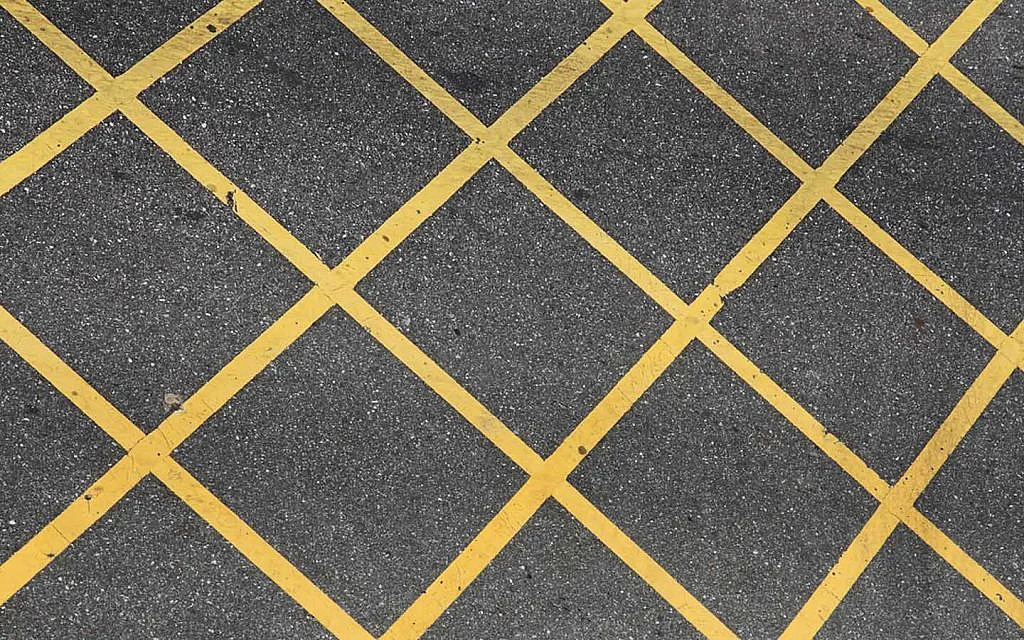Dubai, a city known for its futuristic infrastructure and world-class road network, continues to lead the region in road safety innovation. As part of the city’s ongoing commitment to streamlining traffic flow and ensuring pedestrian safety, many residents and visitors have recently noticed a new road marking feature appearing across key urban areas: zig-zag lines.
These unusual markings—painted in bright white and placed near pedestrian crossings—may seem unfamiliar to many motorists. But they are anything but decorative. Instead, these zig-zag patterns are part of a deliberate effort by Dubai’s Roads and Transport Authority (RTA) to improve visibility and increase safety for pedestrians, drivers, and cyclists alike.
What Are Zig-Zag Lines?
Zig-zag road markings are a traffic control feature used globally, particularly in countries such as the UK, Australia, and parts of Europe. Dubai has now joined this list as part of its Smart Mobility Strategy and Vision Zero initiative, which seeks to eliminate all traffic fatalities.

Typically located before and after pedestrian crossings, these zig-zag patterns serve a crucial function: they signal a “no stopping” or “no parking” zone, ensuring a clear line of sight between drivers and pedestrians at crossing points.
In simpler terms, zig-zag lines are a visual alert to all road users that they are approaching an area requiring extra caution and attention.

Why Has Dubai Introduced Zig-Zag Lines?
According to the RTA, these markings have been introduced in areas where pedestrian crossings are frequent, and visibility is vital—particularly in busy urban streets, near schools, malls, and metro stations.
The objectives are clear:
- Improve pedestrian visibility by keeping parked or stopped vehicles away from crossing zones.
- Warn drivers to reduce speed and prepare to yield to pedestrians.
- Increase road discipline by discouraging illegal parking near crosswalks.
- Enhance traffic flow by eliminating sudden stops and erratic driving behavior near crossings.
Dubai, which has consistently aimed to reduce pedestrian-related traffic incidents, views this marking system as an effective, low-cost solution to prevent accidents without the need for additional signals or speed bumps.
The Psychology Behind the Pattern
There’s a reason zig-zag lines are effective. Their irregular, almost hypnotic pattern naturally attracts the eye and triggers a subconscious reaction in drivers to become alert.
Unlike traditional solid lines or rectangles, the zig-zag breaks the visual rhythm of the road, prompting the driver to slow down and take notice. This visual disruption is precisely the intent: to momentarily interrupt the “autopilot” mode of driving and demand attention to the immediate surroundings.
What Drivers Need to Know
If you’re a motorist in Dubai, understanding how to respond to these road markings is essential for safe and legal driving. Here’s what zig-zag lines mean for you:
- No Stopping or Parking: You are not allowed to stop, wait, or park on zig-zag lines, even momentarily. Doing so can result in fines or vehicle impoundment.
- Prepare to Yield: These markings indicate the presence of a pedestrian crossing ahead. Be prepared to yield to anyone crossing or waiting to cross.
- Speed Caution Zone: Reduce speed and stay alert for sudden pedestrian movements, especially in areas with high foot traffic.
- CCTV Monitoring: Many of the areas with zig-zag lines are monitored by smart traffic cameras. Violations are automatically recorded, and fines are issued without the need for human enforcement.
Penalties for Violations
The RTA has made it clear that failure to comply with the rules surrounding zig-zag lines will not be taken lightly. Penalties may include:
- Fines starting from AED 500
- Black points on driving licenses
- Towing of vehicles in case of illegal parking
- Higher insurance premiums due to traffic violations
The goal, however, is not just enforcement, but education. Many drivers are still unfamiliar with the zig-zag system, and awareness campaigns have been launched to help motorists understand the purpose and importance of the new markings.
Public Response and Awareness
As with any new initiative, the public response has been mixed—ranging from curiosity to confusion. While some motorists welcome the measure for its role in boosting pedestrian safety, others have called for clearer signage and more driver education.
“I thought it was just a design at first,” admitted a resident in Al Barsha. “But then I saw a car get fined for stopping there, and I realized it’s something serious.”
To address this, the RTA has rolled out an educational campaign via social media, digital billboards, and even radio announcements. Driving schools across the UAE have also begun including these markings in their training modules to prepare new drivers for updated road conditions.
A Step Towards Smart Mobility
The introduction of zig-zag lines is one of many efforts by Dubai to align its traffic infrastructure with global best practices. The emirate’s Smart Mobility Strategy 2030 envisions a safe, integrated, and efficient road network that leverages smart technology, visual cues, and behavioral science to improve urban mobility.
These initiatives also support Dubai’s Vision Zero—an ambitious goal to bring road fatalities down to zero through smarter design, better regulation, and widespread public awareness.
International Perspective
Globally, zig-zag lines have been used successfully in cities like London, Sydney, and Amsterdam, often contributing to a measurable reduction in pedestrian accidents. Dubai’s adoption of these road markings signifies its commitment to matching and exceeding global urban mobility standards.
Moreover, as Dubai continues to attract millions of tourists and new residents annually, standardized road markings help align local practices with those familiar to international drivers—creating a more intuitive and universal driving experience.
Looking Ahead
The rollout of zig-zag lines is expected to expand in the coming months, with the RTA identifying new areas of high pedestrian traffic that could benefit from enhanced visibility and enforcement.
Residents are encouraged to report any misuse of these zones through the RTA app or the Dubai Police platform. With the cooperation of drivers, pedestrians, and authorities, this small change in road design could have a lasting impact on safety and efficiency.
Conclusion
Zig-zag lines may seem like a minor addition to Dubai’s complex road system, but they carry a powerful message: safety first. As the city grows, evolves, and becomes more pedestrian-friendly, it’s the responsibility of every road user to stay informed, alert, and respectful of the rules.
After all, a city is only as smart as the people navigating it—and with initiatives like these, Dubai is making it easier for everyone to move safely and confidently into the future.
Do follow Uae stories for more Updates
Heritage Reimagined: Abu Dhabi’s Cultural Foundation Reopens After Renovations














